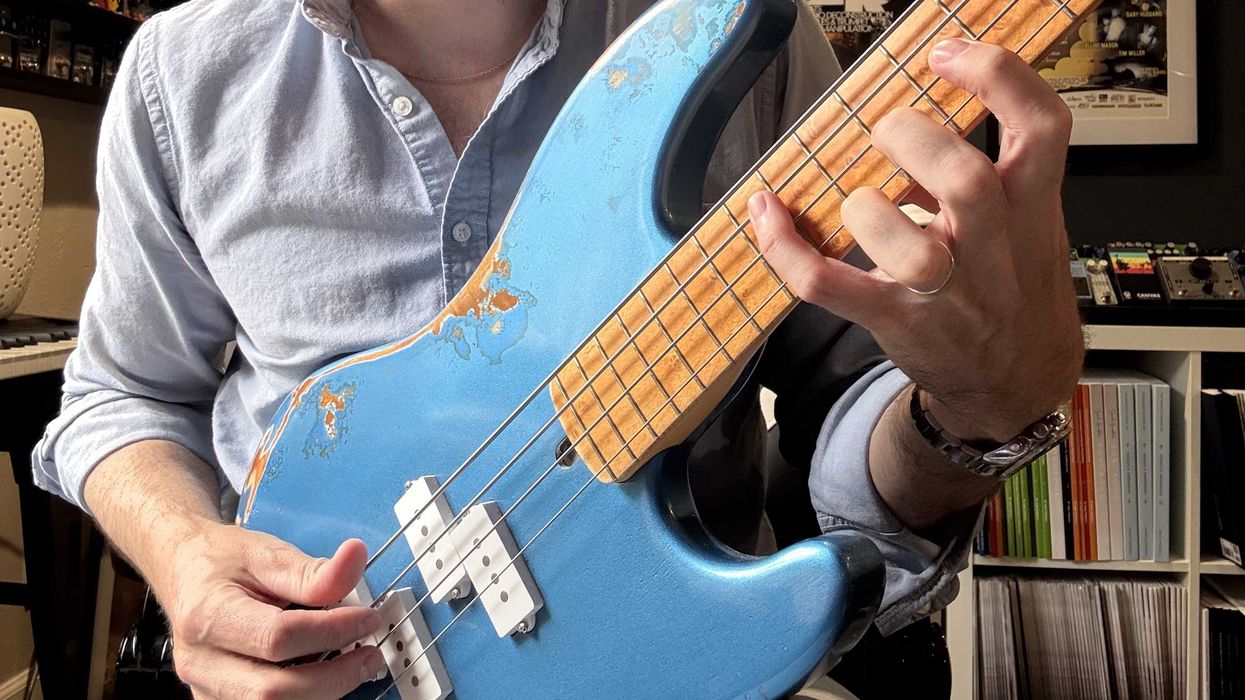Do you prefer a rosewood, ebony, or maple fretboard? Why does it matter? The truth is that one of the most important factors when choosing a guitar is fretboard wood. Most guitarists are overly concerned with pickups, which can be easily changed, instead of concentrating on the fretboard, which cannot. I host a very popular workshop every year on choosing fretboard materials called Many Pickups, One Fretboard—the Key to Sonic Nirvana. Next year’s event is sold out, but I thought it would be prudent to share some highlights here. Of course, there are numerous exotic materials used for guitar fretboards, but for the sake of brevity, I’ve limited my reflections to the “big three” woods: ebony, rosewood, and maple.
None more black. The best fretboards for metal music are made from ebony. This is because they are black. Ebony is also fast. That’s good because metal often requires speed. It is hard and slick, allowing a player’s fingers to blaze over the frets without speed-robbing drag. Dense ebony transmits the higher frequencies efficiently, and allows them to compete with cymbals and castrato lead singers.
An interesting thing about ebony fretboards is that jazz and classical guitarists also revere them. That’s because these disciplines often require speedy arpeggios and single-note runs similar to those used in metal. Classical and jazz players can’t be bothered with string bending, and rely more on complex chord voicings, which benefit from ebony’s superior clarity. It’s no wonder that many metal guitarists find inspiration in the works of classical masters like Mason Williams and Yngwie Malmsteen.
Endangered import. Desire more nuance? For blues and blues-rock music, I recommend a nicely quarter-sawn slab of rosewood. This lovely wood is under scrutiny by environmentalists and is getting harder to import, which, of course, makes it more desirable. Definitely softer than ebony, rosewood provides a pleasing feel for guitarists who like to strangle notes. Its slightly rougher feel has a way of slowing down licks and encouraging emotive bending of the strings. This is most likely why Albert King (who preferred a Gibson Flying V with a rosewood ’board) is known for his slippery two-step bends and wide vibrato, while B.B. King and Freddy King exhibited more of a “trilling”-style, quick vibrato on their ES-model Gibsons with ebony fretboards. A practiced ear can listen to a recording and easily determine which type of fretboard wood a blues solo was played on.
Rosewood also encourages “over-bending,” even on a Telecaster. It’s no secret that this is how Jimmy Page set the standard for the technique on seminal recordings such as Led Zeppelin’s version of “I Can’t Quit You Baby.” Likewise, the semitone, raga-rock stylings of Michael Bloomfield were also performed on a rosewood-shod guitar. Musicologists surmise that Fender’s decision to equip their instruments with rosewood fretboards in the late 1950s made much of the classic-rock pantheon possible. Had Fender not foreseen this shift in musical tastes, Zeppelin might have been a Buck Owens tribute band.
The other white meat. Maple fretboards (sometimes called blonde or white necks) have long been associated with country music because they add zing, snap, and pop to any guitar, and work well for music that requires the guitar to stand out. Nothing says Hee Haw like Eddie Van Halen’s double-stops and horse whinnies. A rule of thumb is that a maple fretboard is halfway between ebony and rosewood, but don’t think of it as a compromise. Maple also has the advantage of showing dirt easily, which speeds up obtaining the authentic look that blues and roots players covet. I gravitate towards maple fretboards for my Americana clients because it possesses a versatile tone that works with both country and Western music. Maple looks fetching and friendly, but be careful. There are plenty of angry people who say it ruined Eric Clapton’s tone and credibility.
So powerful is the allure of the blonde neck that in 1973 Gibson—desperate to retain Keith Richards’ endorsement—launched their L6-S guitar. Designed in part with pickup legend and country music fanatic Bill Lawrence, the L6-S was constructed entirely from maple. This was, no doubt, because the astute Lawrence recognized that Richards was under the spell of country-rock icon Gram Parsons. Lawrence was onto something, as Richards continues to be associated with a maple fretboard, albeit on a Telecaster. I always suggest maple for customers who use open-G tuning.
It’s my hope that this synopsis of my seven-hour workshop (plus break for lunch) on fretboard wood has opened your eyes and ears. Next time you are considering a new guitar purchase, take into consideration the enormous contribution the fretboard makes to your instrument’s sound and feel. Remember: Pickups come and go, but a fretboard is forever.
















